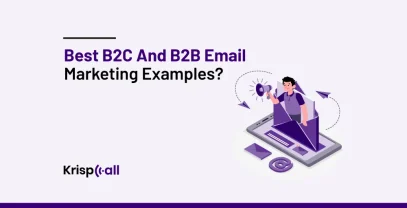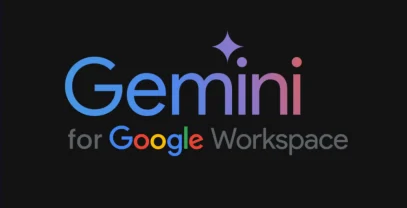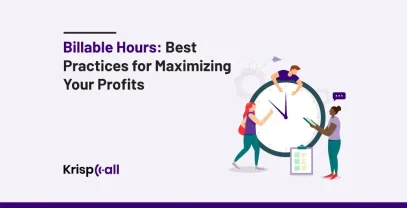Are you looking 🕵️♂️to increase sales volume by reaching more potential consumers?
A sales cadence could be a secret solution 🤫for you. It provides a roadmap to drive sales based on the needs and preferences of leads.
In this blog, we will uncover the important role of a good sales cadence for the sales team. We will discover some best practices of sales cadence to achieve 🎯 desired outcomes.
Let’s dive in and explore it together. 🤝
🔑Key Highlights
- An outbound sales cadence is a strategy prepared to gain more potential buyers via different communication channels.
- The benefits of a good sales cadence include higher response rates, effortless tracking, a structured communication platform, and increased efficiency.
- The best practices of outbound sales cadence involve buyer personas, personalization through automation, multiple communication channels, and selecting the right tools.
- Creating an outbound sales cadence typically involves emails, phone calls, and social media interactions and is designed to move prospects through the sales funnel.
What Is an Outbound Sales Cadence?
Outbound sales cadence is a step-by-step plan that sales reps follow to engage with potential customers through various channels such as emails, phone calls, texts, and many more.

Outbound sales cadence starts when the sales representative of a company contacts prospects and ends with converting prospects into paying customers.
Different sales cadence methods are applied for different categories of prospects to push them into sales funnels to become customers. A good outbound sales cadence involves at least the use of three channels (emails, phone calls, and social media).
Here’s another interesting article: 👉Sales Planning: Everything You Need to Know
Advantages Of Sales Cadence
Investing time in a good sales cadence process is really worthwhile. With a good sales cadence, the sales team can generate more qualified leads that convert into buying customers.
Here are some advantages of sales cadence:
- Effortless Tracking: A sales cadence helps to track the sales process effectively and effortlessly. You can easily know where you are in the sales process with each prospect. It also lets you know at what point you should stop contact with prospects.
- Structured Communication: A sales cadence provides a structured communication platform. It lets you know at which step you are with your prospects and ensures you never repeat the same step twice and miss any steps.
- Enhance Scalability: A good sales cadence offers you the scalability to manage and track a large number of clients. It makes it easy to handle each client effectively and improve the sales team.
- Improved Response Rate: A sales cadence provides details about prospects, such as the mode of channels they prefer, their needs, and the problems they are facing, which helps to send personalized content and improves the response rate.
- Better Efficiency: With a good sales cadence, the sales team knows everything about when and what action to take. It saves time and brings efficiency to work, eliminating guesswork or making attempts to wrong prospects.
Best Outbound Sales Cadence Examples
Look through the following examples and choose the relevant one for your business to create the best outbound sales cadence.
Example 1
When your business targets customers who prefer face-to-face or phone calls or traditional industries, a traditional B2B sales cadence is suitable for gaining more prospects.
In this approach, make an initial call attempt and follow-up emails asking for booking meetings. Wait for 2/3 days and make a second phone call. If prospects have no response, send a personalized video message through email. Make a last phone call and follow-up email.
A typical B2B sales cadence follows the sequence mentioned below:
✔️Day 1: Initial email introducing your company and the value proposition.
✔️Day 2: Follow-up phone call if there’s no response to the email.
✔️Day 3-7: Additional outreach attempts could include another email with more specific information or a social media connection request with a personalized message.
✔️Ongoing: Depending on the prospect’s engagement, the cadence may involve further emails with industry insights, case studies, or offering a consultation/demo.
Note: The exact timing can vary, and this is a general outline.
Example 2
When a business targets tech-experienced prospects or digital industries, a digital-native sales cadence can be used. It emphasizes the use of digital channels, such as social media, to attract more prospects.
In this type of sales cadence, the sequence can be set as this:
✔️ Day 1: Initial Email
- Introduce yourself and your company.
- Briefly mention something specific about their work or company (personalization).
- Offer a valuable piece of content related to their industry.
✔️ Day 2: Follow-up (if no response)
- Option 1: A polite follow-up email reminding them of your initial message and highlighting the value proposition.
- Option 2: Consider a quick, personalized video intro if your email hasn’t gotten a response.
✔️ Day 3-7: Nurture and Engage
- Respond promptly to any inquiries.
- Share targeted content addressing their specific needs (case studies, reports, blog posts).
- You should engage with your audience via social media content (share relevant articles and comments thoughtfully).
- Optionally, send another email with even more specific information tailored to their industry or challenges.
- You can also consider a connection request on LinkedIn or Twitter with a personalized message.
✔️ Ongoing (Based on Engagement)
- Continue providing valuable content based on their past engagement (industry insights, success stories).
Remember, the digital-native cadence follows shorter & faster sequences and focuses on personalization through automation.
Example 3
Businesses looking for a blended approach that aims to provide a well-rounded strategy for reaching out to outbound leads can try a hybrid cadence.
A hybrid cadence is a mixture of both traditional and digital cadence. It offers multiple touchpoints for potential customers in a wide range of industries. Here’s a breakdown of what can be done in a hybrid cadence:
✔️ Day 1: Introduce yourself, your company & value proposition via email or/and social media with a personalized message!
✔️ Day 2: If there’s no email reply you can now try a phone call. Make a friendly call, reiterate value & schedule a follow-up.
✔️ Day 3-5: In this phase, you share targeted content relevant to their industry/challenges and stay engaged with their social media content (share, comment).
✔️ Day 5-7:
- Option 1 (Engagement): Offer consultation/demo via email if they show interest.
- Option 2 (No Engagement): Check-in via LinkedIn message and see if they have questions.
✔️ Ongoing: Finally, you schedule a call to discuss their needs and see if your solution fits. You can also send a tailored demo & use email for further communication and resources.
The beauty of a hybrid cadence is that it gives you the flexibility to adapt your outreach based on the situation. Also, you can prioritize using certain channels depending on the lead’s preferences or the nature of your product/service.
Example 4
For businesses with short cycles or at times of high-urgency offerings to keep the brand on top in the prospect’s eyes a high intensity cadence can be a go-to options.
In a high-intensity sales cadence, the methods used here are just the same as in a typical outbound sales cadence. The only difference is that you can send rapid multi-channel blitz of emails, calls, social media messages, and potentially even texts, all emphasizing your value proposition.
The call frequency and email sequences increase, urging prospects to act quickly, but personalization and providing value in every touchpoint remain crucial for success.
It’s important to note that a high-intensity cadence isn’t suitable for every situation. It can be effective for lead generation or for products with shorter sales cycles.
Example 5
Businesses that are selling expensive and complex solutions to prospects can opt for a value-focused cadence. It helps to overcome sales objections in the sales process.
Here’s an example of the sequence followed in a value-focused sales cadence:
✔️Day 1: Initiating contact with a personalized message highlighting a potential pain point for the prospect.
✔️Day 2: Following up with a valuable resource (e.g., industry report) related to the prospect’s pain point.
✔️Day 3: Checking in to see if the prospect found the resource helpful and offering to answer any questions.
✔️Day 4-7: Continuously providing valuable content or insights related to the prospect’s challenges.
✔️Day 8: Express interest in learning more about the prospect’s specific needs and offer a call to discuss. (Call happens)
✔️Post-call: Summarize key points from the call and reiterate how your solution addresses their needs.
Then, share the relevant content via email and make a second phone call to discuss previously sent content. At last, request a LinkedIn connection and finally send an email offering demo.
This might interest you: 🧐Challenger Sales Model: How To Lead Conversion?
How Do You Create An Outbound Sales Cadence That Converts?
A well-created and managed outbound sales cadence is required to reach out, engage, and convert prospects. The following points help to create an outbound sales cadence that converts:
- Integrate Calls and Emails: Integrating calls and email is an effective way to create an outbound sales cadence that converts. It increases visibility and improves the sales cadence.
- Use SMS Text Messaging: SMS text messages have higher open rates than emails. An SMS text gets a faster response compared to emails.
- Implement Automated Tools: Using automated software in a few steps of sales cadence improves the sales cadence and converts prospects into potential buyers.
- Deliver Personalization: You should create a personalized touchpoint based on the buyer personas to gain a positive response.
- Use Multiple Channel Approach: Use multiple channels to reach out to prospects, such as emails, phone calls, texts, social media, and soon.
- Implement Optimization: After creating a sales cadence, it is important to measure the success of the sales cadence over time.
Best Practices For Outbound Sales Cadence
1. Sales Cadence Based On Buyer Personas
Sales cadence should be created differently for different potential buyers. Create the sales cadence after identifying the ideal customer profile because customers are different.
You must identify your buyer’s personas before creating the sales cadence to reach them effectively.
For example, the cadence for the manager and CEO of a company is different. Using the same cadence for both buyers will not work out.
2. Personalization and Automation
The right mixture of personalization and automation is important for sales cadence. A feeling of personal touch moves prospects into sales funnels and converts them into paying customers.
Automation with a personal touch in a few steps of sales cadence is good. Personalized emails and messages make them feel valued and create a good impression of a company and a brand.
A sales representative should send personalized emails and messages with little automation to success in the sales cadence.
3. Multiple Communication Channels
A good sales cadence must include multiple communication channels. Prospects prefer different modes of communication, such as text messages, social media, emails, phone calls, voicemails etc.
Before deciding channels to interact with prospects, you must consider the buyer’s personas and which mode of communication they prefer.
List the target customers and figure out which channel they are actively present in. It increases response rate and brings effectiveness in sales cadence.
4. Select the Right Sales Cadence Tool
In order to achieve a good sales cadence, several tools must be used simultaneously. Similarly, when it comes to running multiple tactics smoothly, good sales cadence tools are essential.
The sales cadence tool is software that helps in the sales process. It has various features for the smooth running of multiple channels and making work more efficient.
However, choose the right software that offers the features you want in software, such as flexibility and scalability.
5. The Time Gap Between Each Attempt
The time gap between each touchpoint is important. You should find the right time between two touchpoints.
Random and more touchpoints at once frustrate prospects and create a bad impression of your product and company.
You should give time to prospects to read, analyze, and understand what you are selling and how it helps them.
Find out more in 🕵Sales Call Planning in Call Center: The Hidden Science That Converts
Conclusion
A sales cadence is a strategy to interact with potential customers. A well-defined sales cadence helps to improve the engagement of customers, boosts sales, and is a vital part of a good sales strategy.
It provides a structured framework for engaging with prospects and guiding them through the buying journey. And by understanding the key components, examples, and best practices outlined in this article, you can create more effective cadences and drive better results for your business.
Before creating a good sales cadence, you must consider factors like personalization, duration of sales cadence, integration of multiple channels, and many more because prospects belong to different industries.





